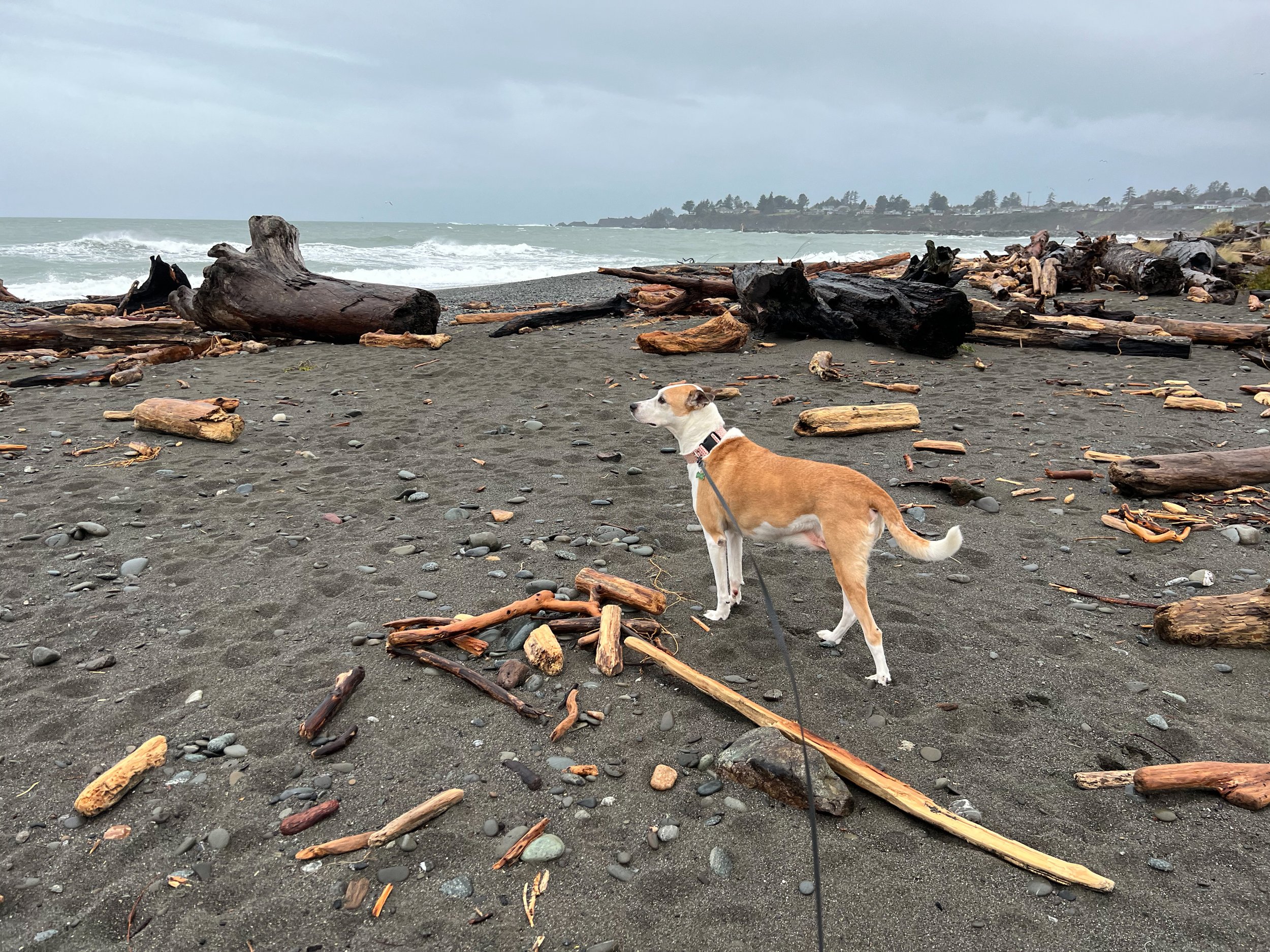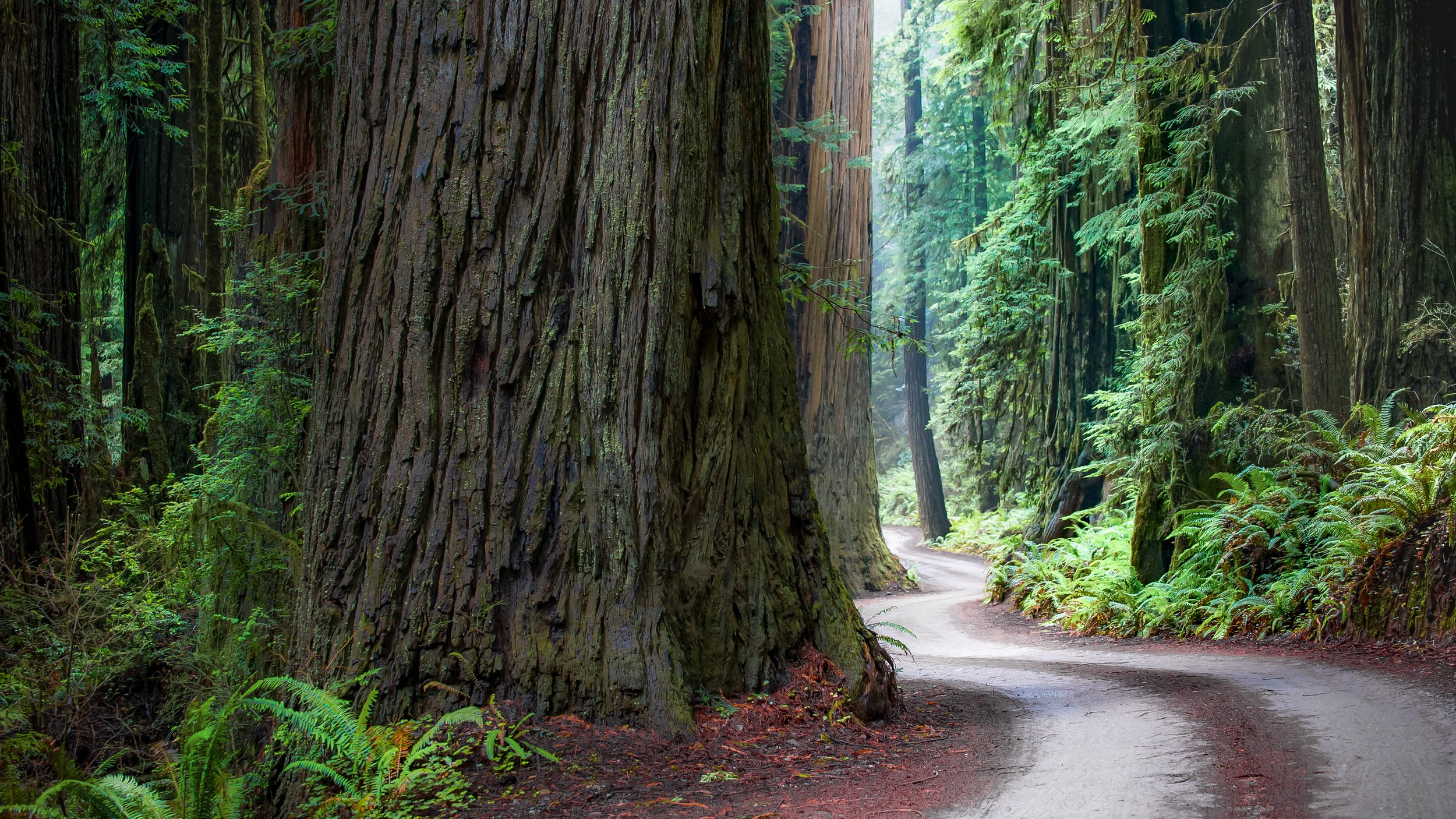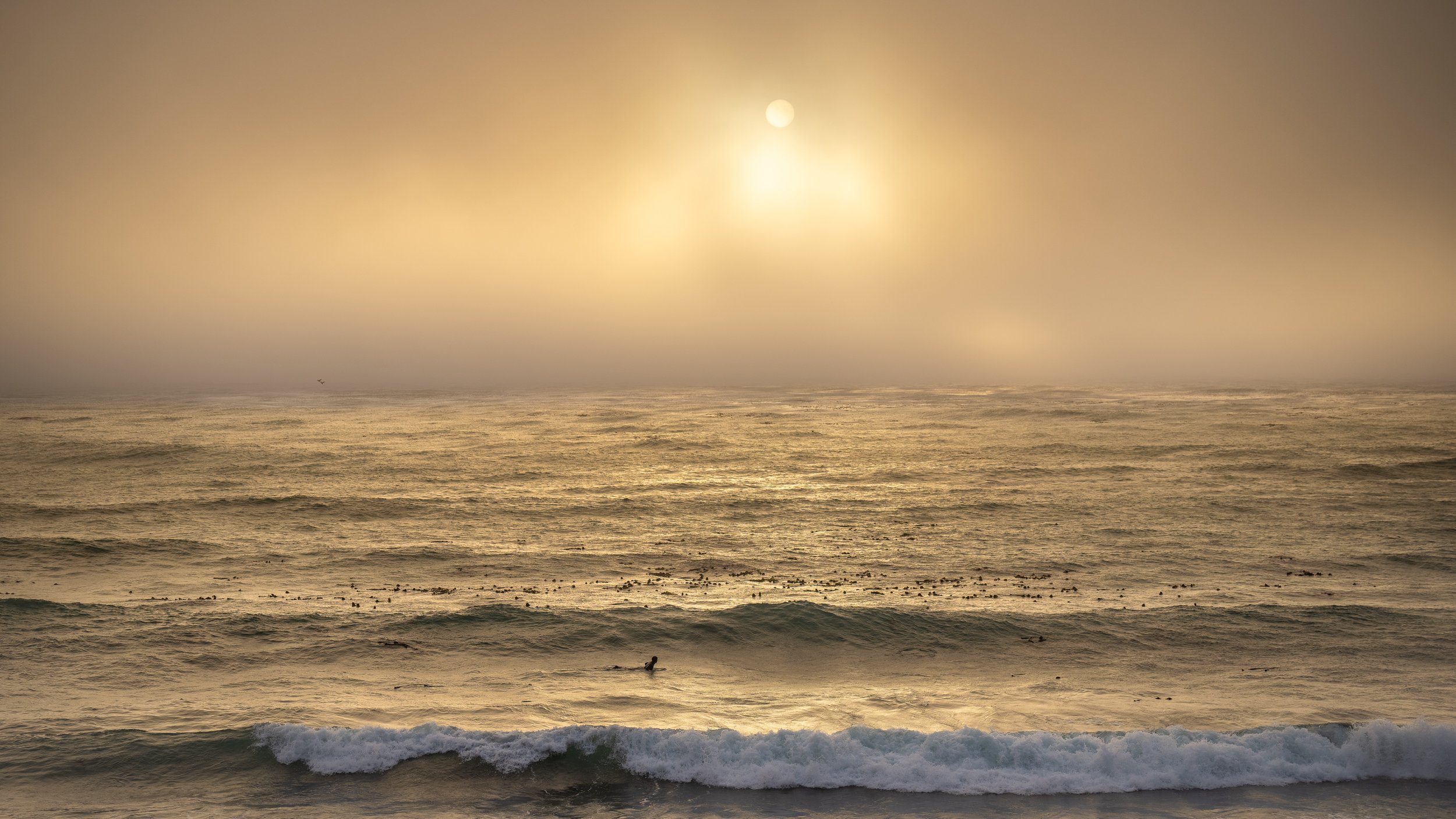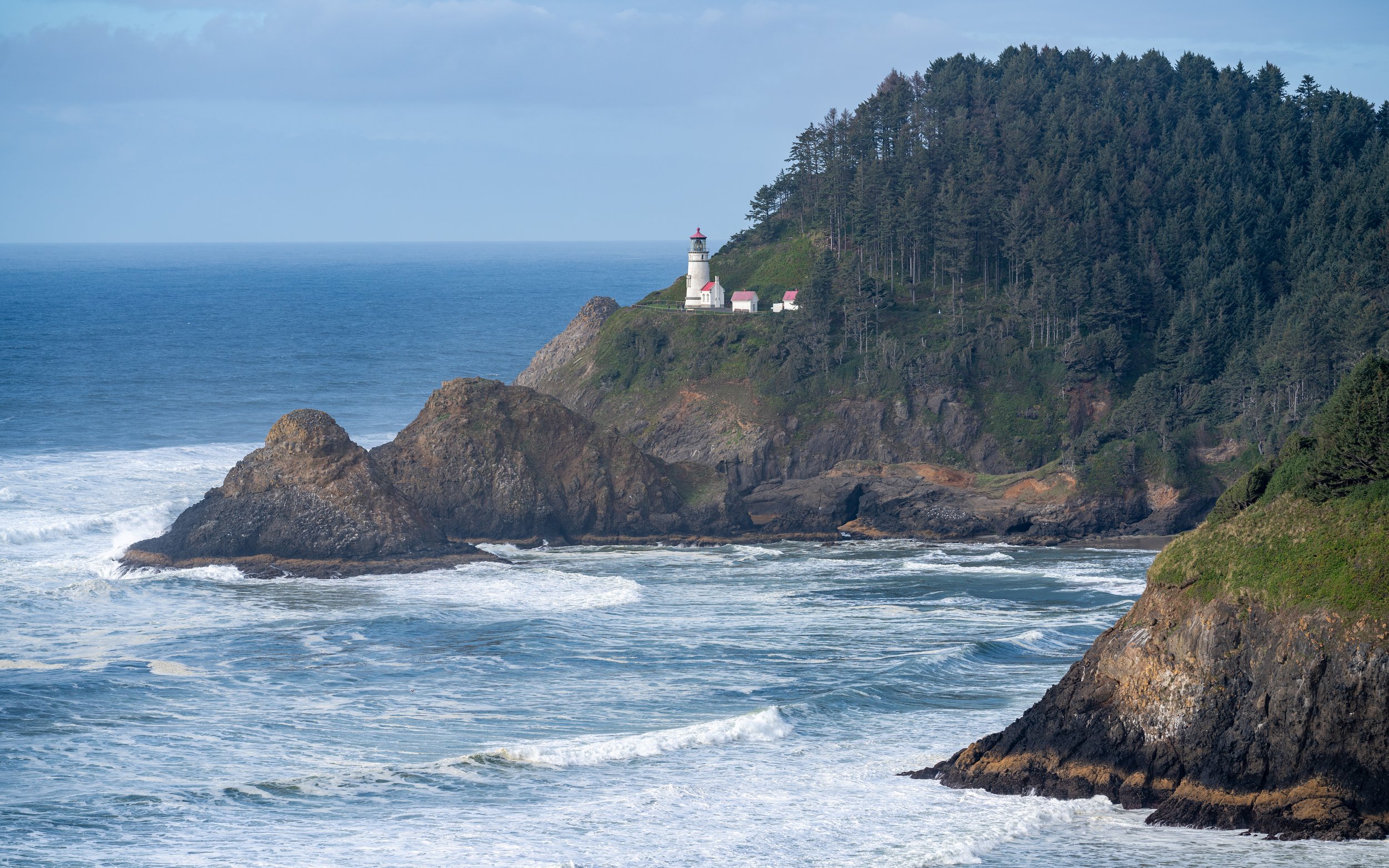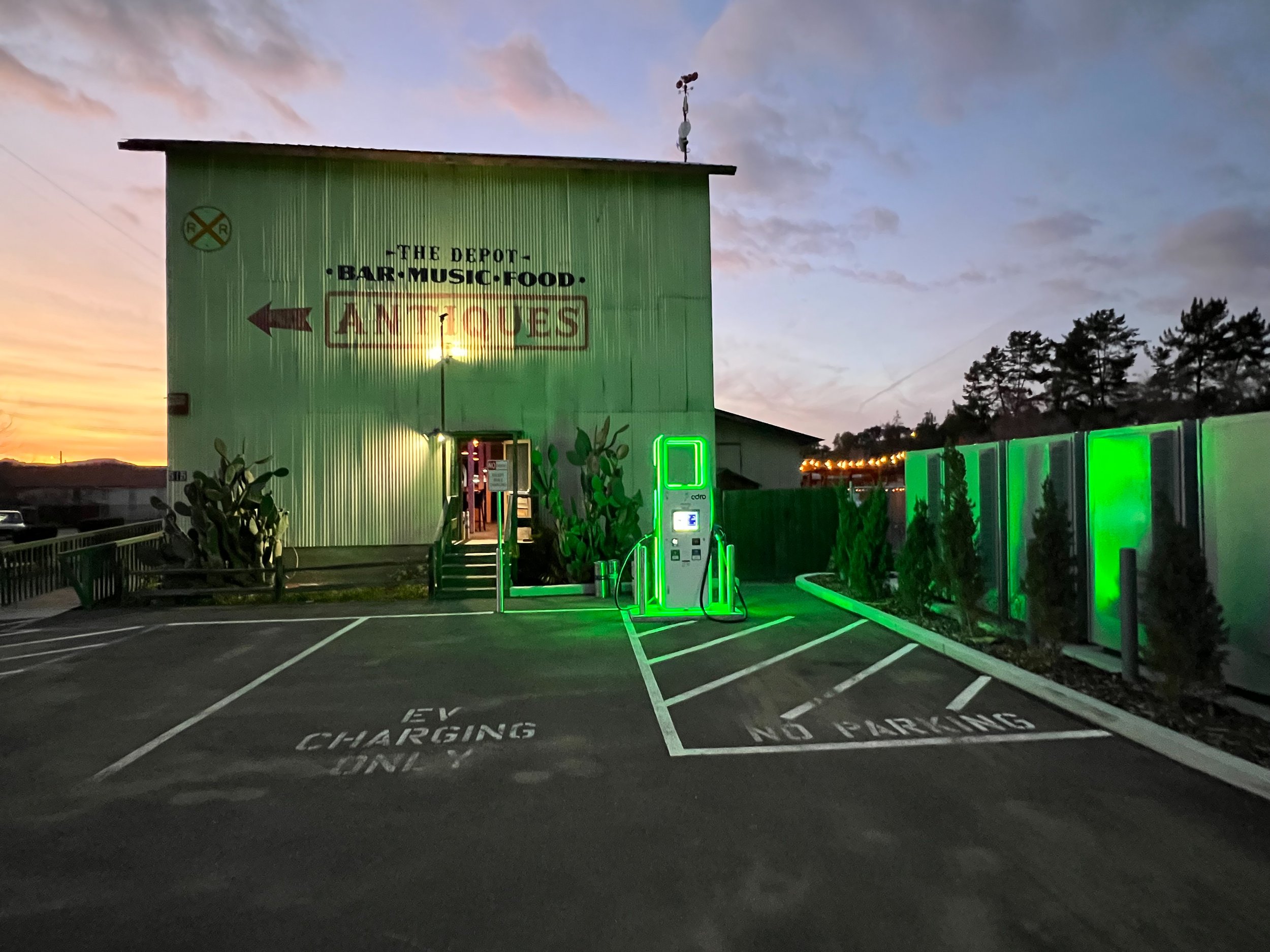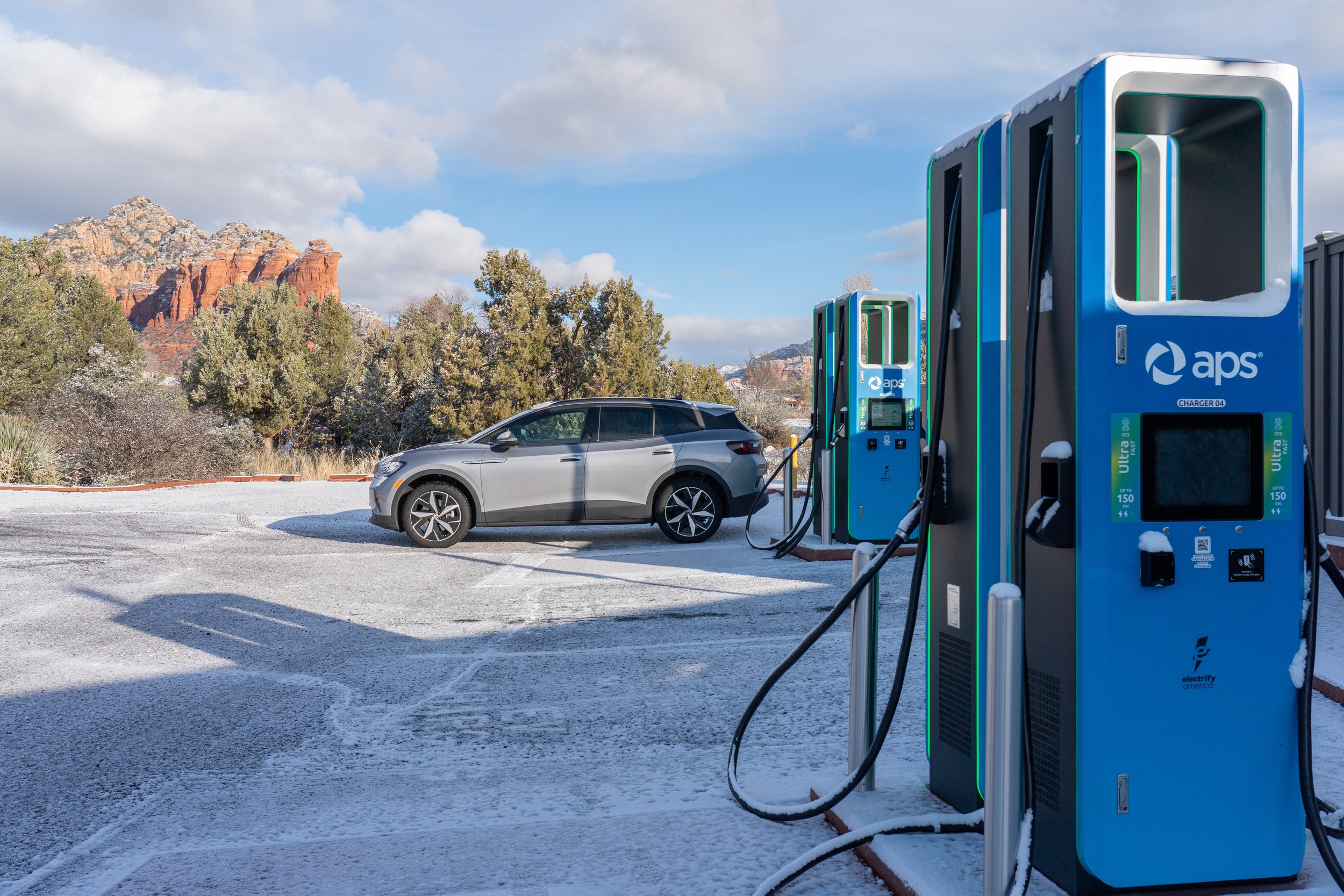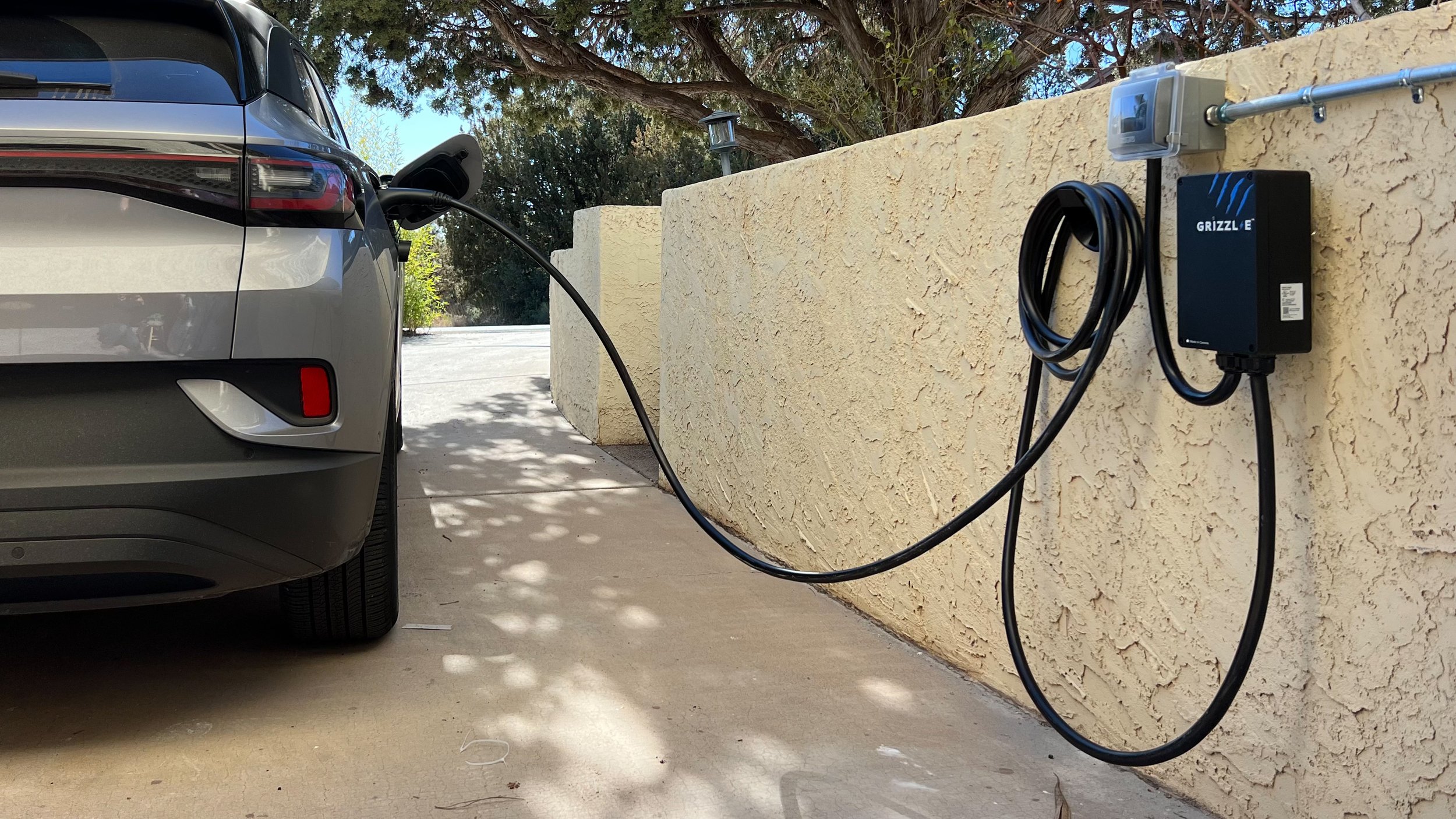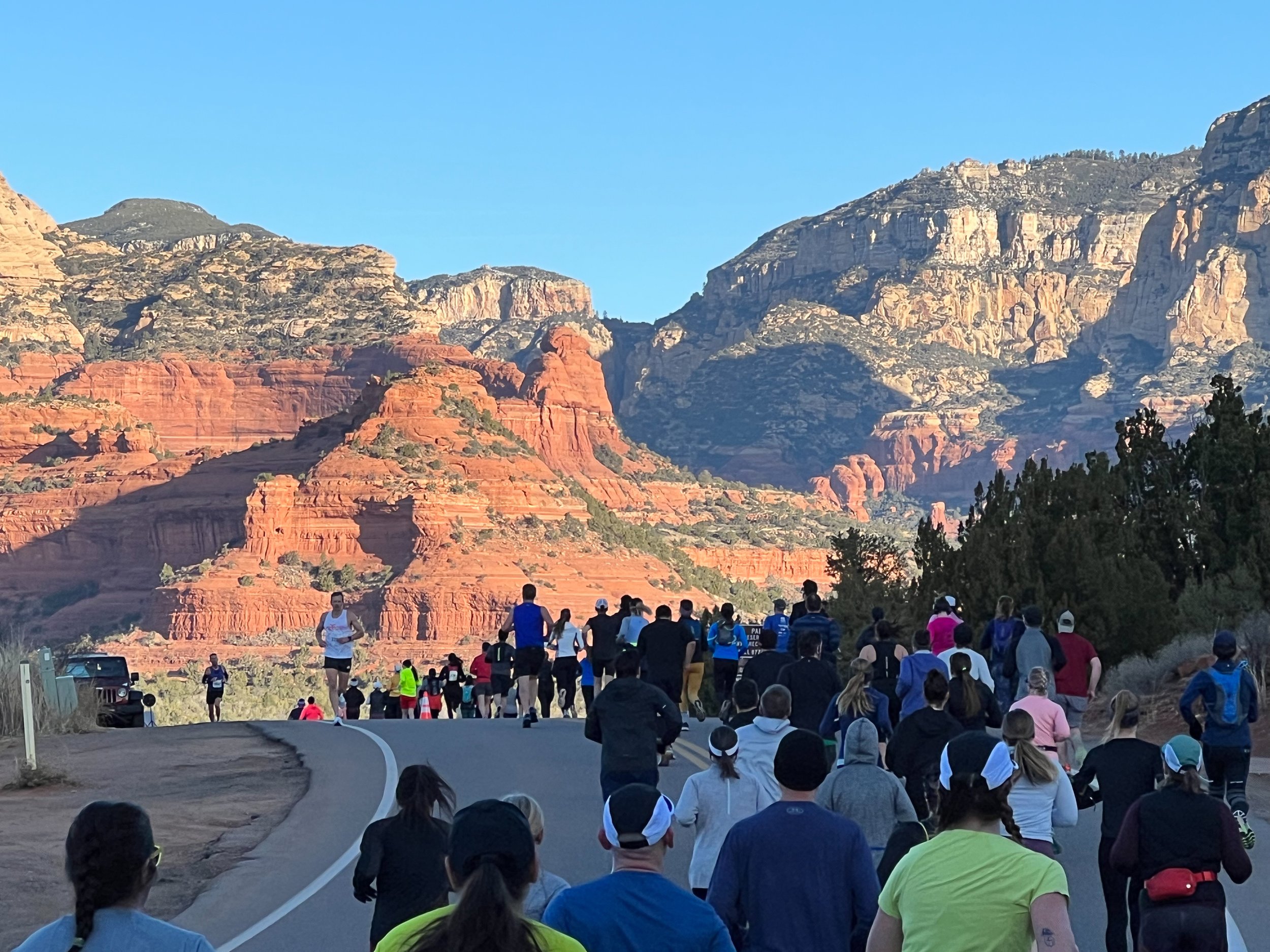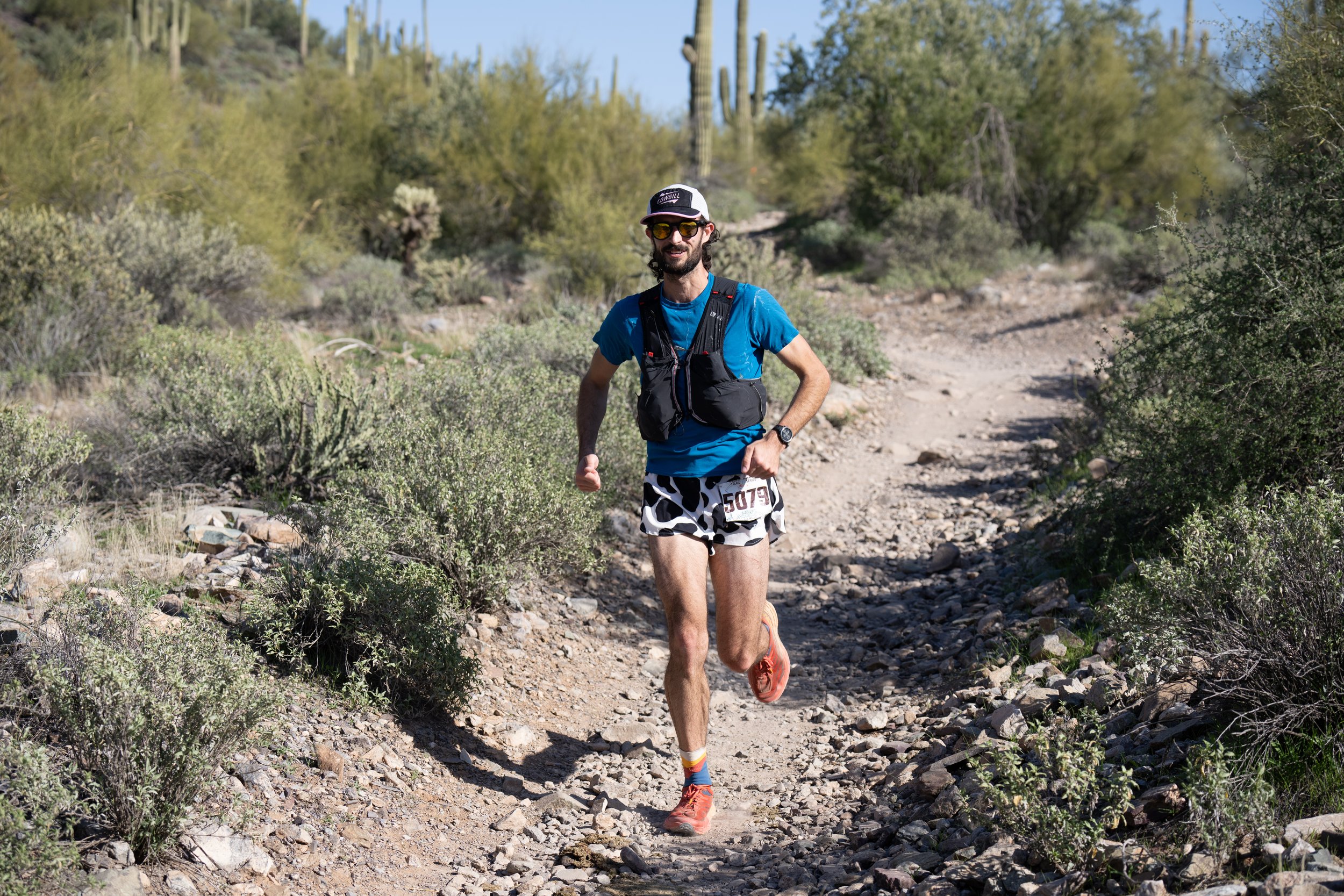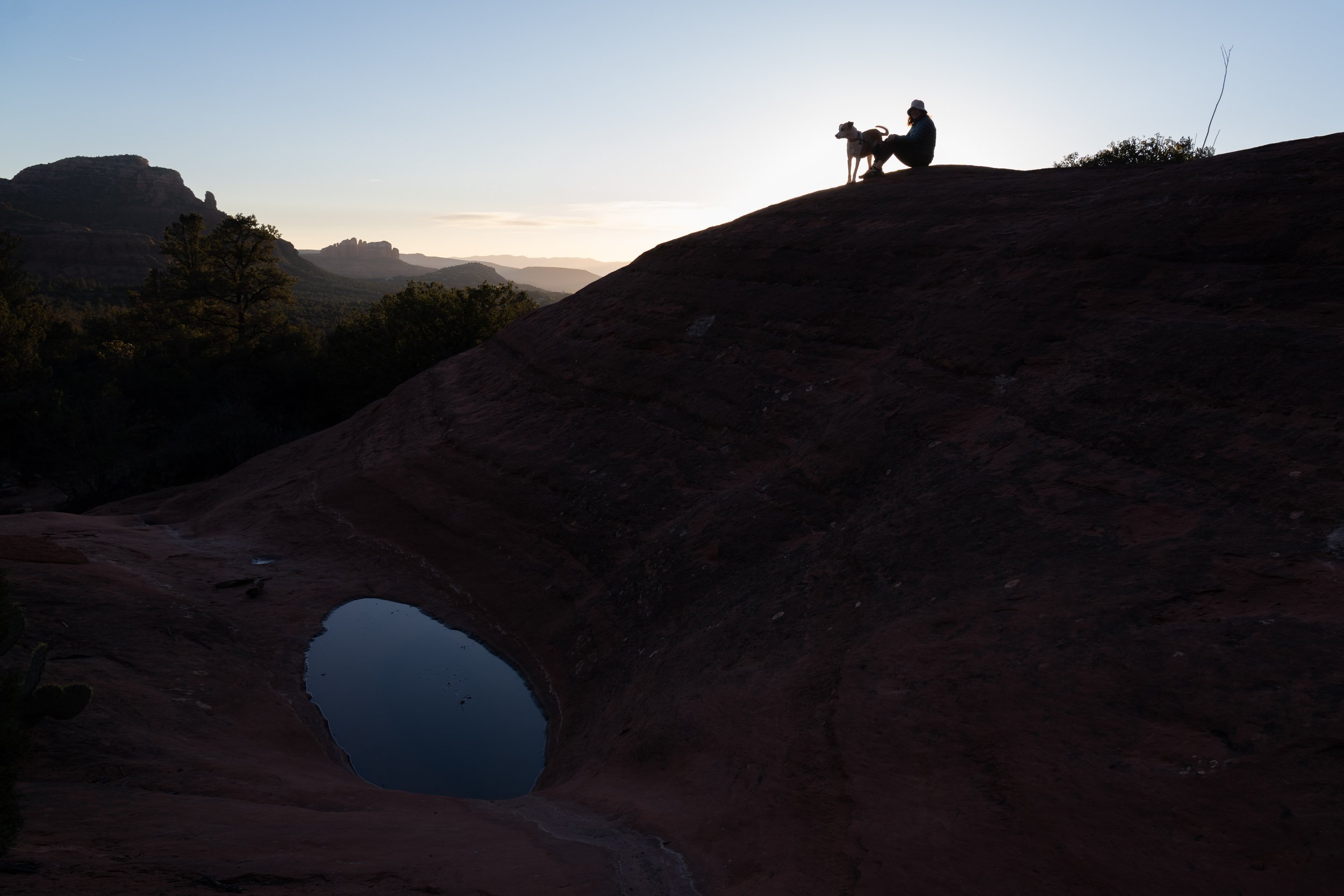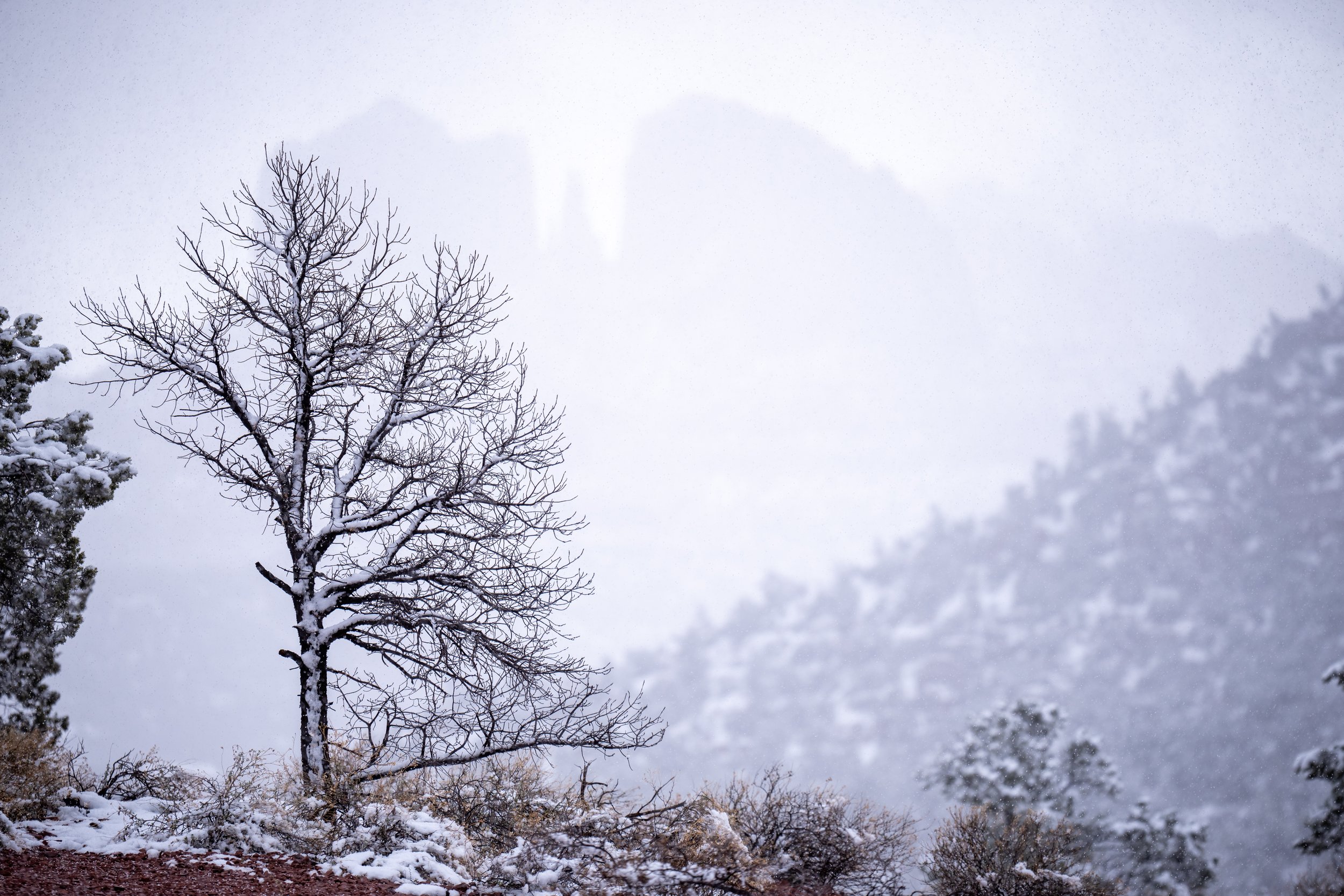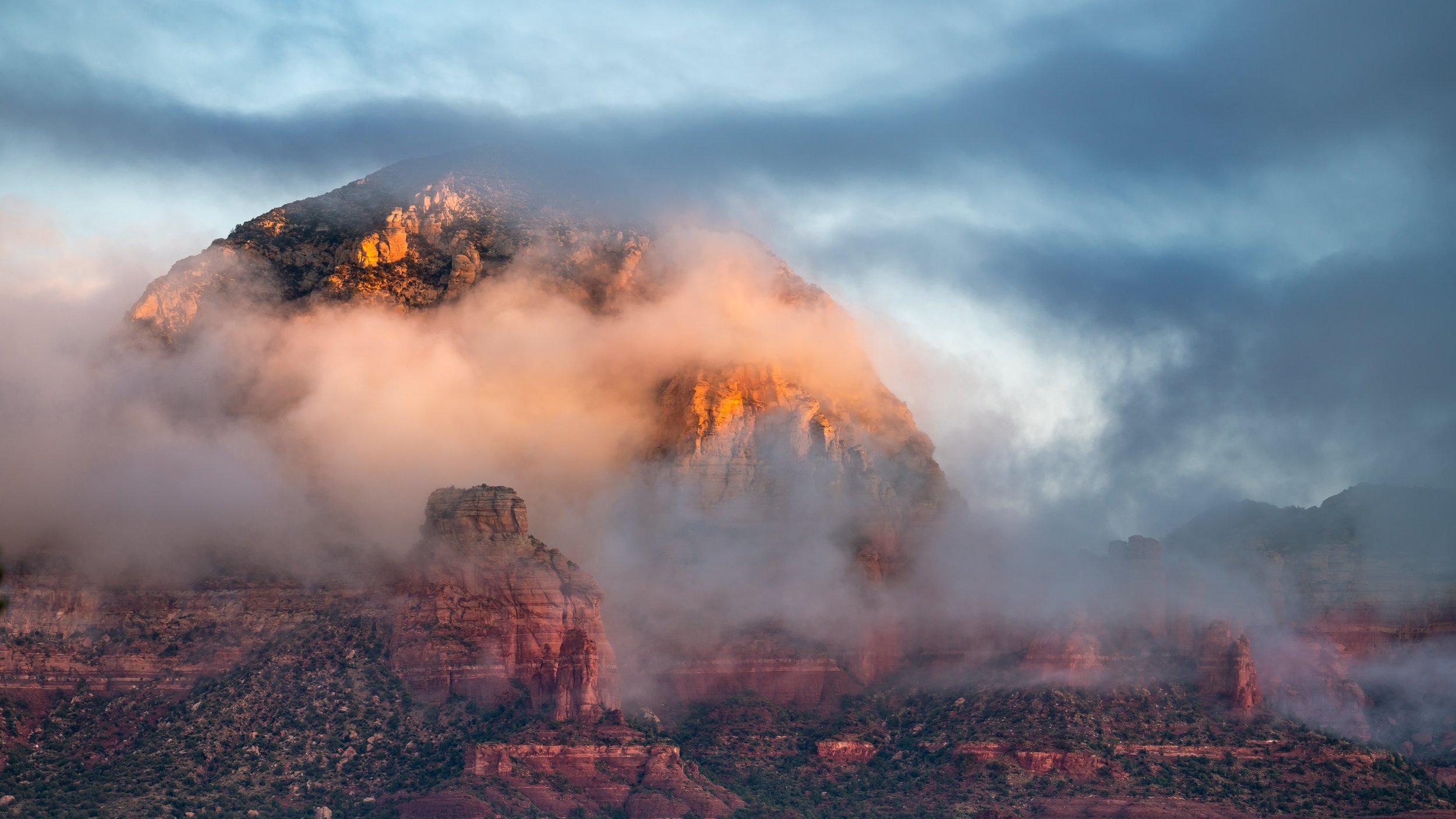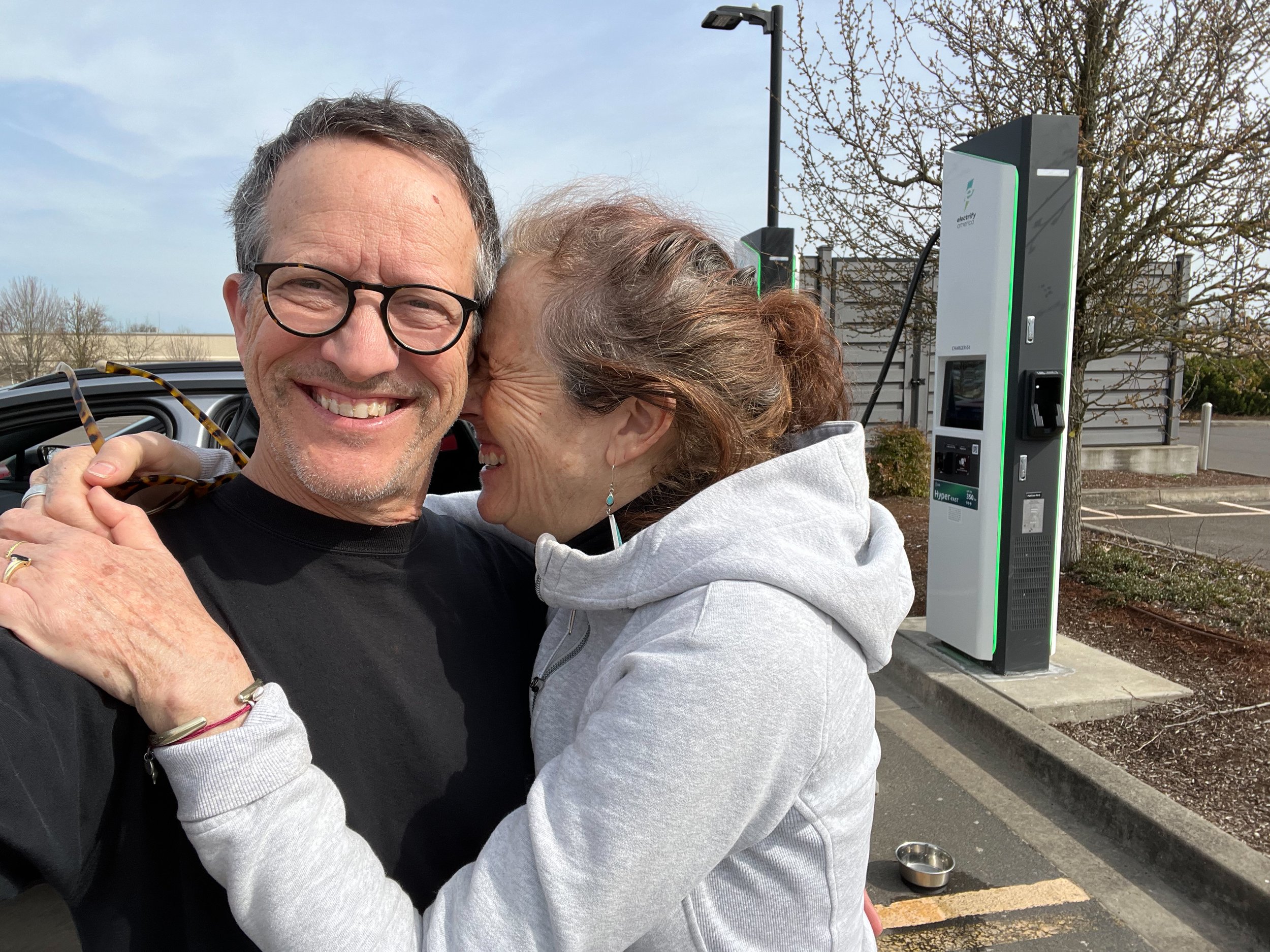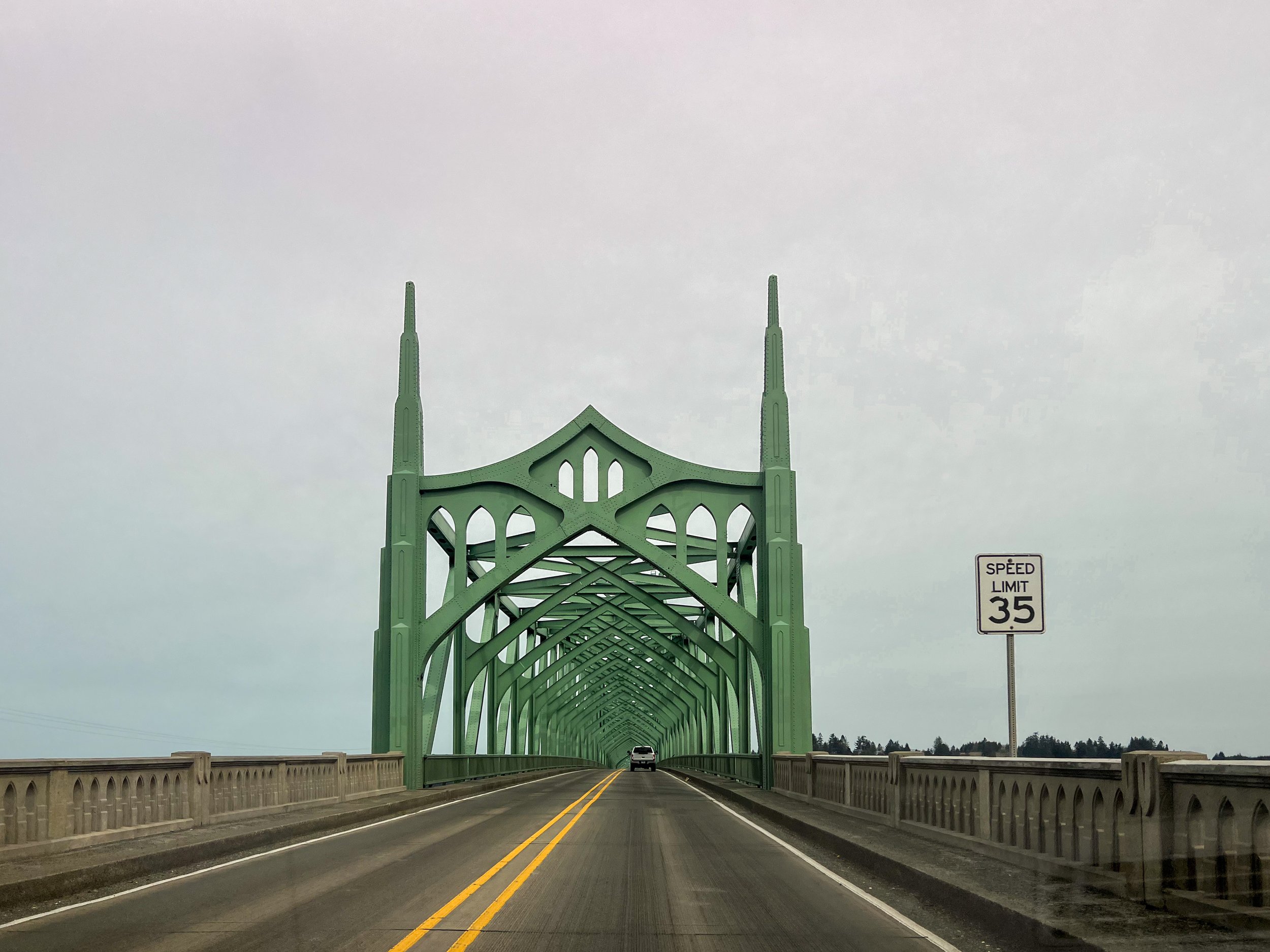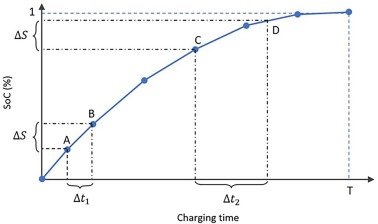Eclectify America
Everything you wanted to know about ev road-tripping in America in the early 21st Century
Including bite-sized visits to outlet malls, Walmart parking lots, casinos, ghost towns, trading posts, and other roadside electric charging attractions.
Recently I acquired an electric vehicle. It was an emotional choice. I didn’t really care about the net carbon footprint, I just wanted to be done with my end of it. Casual research told me that we could drive this car from our home in Seattle to our sister-in-law’s home in Sedona and that there were multiple choices for routes with ev charging stations. For this first test drive we followed the West Coast all the way down to Long Beach, hung a left and crossed the Mojave to the high desert of Sedona, then returned via the two-lane highways of the Arizona and Nevada deserts. My companions were a large dog, a patient cat, and, on the way back, my human companion and partner, Fran. When I left Seattle I was an anxious, range-fearing newbie and the jury was out on EV ownership. By the time we returned, I was a total convert, addicted to the absolute pleasure and moral high ground offered by alternative-energy travel. With a few quirks, of course.
Copilot Jackson - say could you close the window? It’s raining.
Road trips are a part of American culture.
It all began in 1855 when the Stephens Murphy Townsend Party became the first wagon train to reach California. Jack Kerouac tattooed it into our culture a century later - 1957 - in his seminal book, “On The Road” which, famously, he plunked out on a mechanical typewriter in one frenzied go, running sentence into sentence in a kind of nonstop jibber-jabber that mirrored their drive across the country along Route 66 and its variations.
Since then, many have had their go at the road. I did, in 1973, with two friends fresh out of high school: we drove the equivalent of one trip around the world - 25,000 miles - by ping-ponging back and forth from coast to coast in a used VW Camper Van with but one self-imposed rule: no stopping for more than 24 hours in any one place. Gas that summer, just months before the Arab Oil Embargo, reached a low of 23 cents a gallon.
Sixty-six years after “On the Road,” the price of gas is upwards of $5 a gallon, the earth is warming - there is still some debate as to why - and the top-selling car in California, so it seems, is a battery operated one that you can charge up in half an hour, faster than your iPhone.
Time for a road trip.
Another Volkswagen.
Precisely 50 years after our road trip in the VW Kroozmobile, I was in another Volkswagen - this time an electric one called the ID.4. The “ID” stands for ‘intelligent design.’ I spent some time during the trip discovering just what that means. Or not. It’s loaded with electronics and lots of intelligence in the form of programmed niceties such as rolling the seat back each time I open the door or beeping at me while I’m parking (am I really in a submarine?) and keeping me on the road when I doze off or when I take my hands off the steering wheel - momentarily I promise! - to capture a photo from the big camera. The car also features a bunch of goofy idiosyncrasies - would you expect anything less from a Volkswagen? For example, sometimes - though not always - the driver’s side window goes down when I pull the up lever. In an attempt to take Bauhaus into the world of tech, I feel that they may have gone a bit overboard in simplifying things like the infotainment panel by removing most of the dials and replacing them with haptic-response touch controls. But overall, the car itself is extremely sturdy, comfortable and quiet to drive, and comfortable to sit in for hours at a time. Those were some of the reasons why I chose it over its Tesla counterpart (great charging network, nice tech stack, questionable build, uncomfortable ride) and the hot EV of the year, the Ioniq 5 (seriously? no rear wiper and no towing package? And dealers gouging at $10k over list?).
A Quick EV Primer.
EV = Electric Vehicle, what this blog is about.
ICE = Internal Combustion Engine, those vehicles that stop at gas stations and need oil changes.
Miles per gallon has been replaced by miles per kilowatt-hour. Mine averages 3.4 on a flat road at 65 mph when the temperature is 65 F.
It makes little sense to charge your EV to more than 80%. Trust me. But there are exceptions. As you shall see.
You’ll need apps for planning, navigating, and for charging. See bottom of blog.
. Got it?
Let’s Drive
Mile 0 - Starbucks Headquarters, Seattle - north end of the parking lot
Got your apps?
With Jackson (dog) as my copilot, we headed south out of Seattle at sparrow’s fart. South away from the incoming jam of commuters. South into the driving rain. South to Portland, where my daughter Josephine set me up with a breakfast of tea and bagels while Jackson took a quick snooze, already exhausted from his primary duty of keeping me awake, which meant that he had to keep himself awake. I had ‘topped off’ the night before at the ChargePoint at Starbucks HQ, so I could easily drive to Portland in one go.
Mile 186 - Fred Meyer, Portland - parking garage, second floor
After a quick re-charge at the Fred Meyer (excellent organic foods section where I picked up some nibbles and a wrap), we continued south through Oregon for several hours, making our second charge stop at the Dairy Queen in Sutherlin before turning west to head for the coast and the 101.
I love this part of southern coastal Oregon because the 101 winds along beaches, cliffs, through forests, and even around mountains. Our destination for the first day was the Beachfront Inn in Brookings, 500 miles from Seattle and just miles from the California border, with pet-friendly rooms where you can hear the roar of the ocean waves from your deck.
Mile 339 - The Dairy Queen - Sutherlin, OR - Also next to a Starbucks. And nothing else.
Mile 537 - Beachfront Inn - Brookings, OR. RV outlet in front of the lobby. No electricity.
I pulled up with just less than 20% charge remaining. I was slightly nervous because this was my first full day of driving, but I had done my homework: the Beachfront Inn has a 240-volt charger for overnight guests, perfect for an overnight charge if nobody else was plugged in. After feeding and walking Jackson, transferring Mochi to the room, and grabbing a burger and beer at the local sports bar, I returned to the Beachfront to plug in - only to discover that the charger was not working. Shit. My first overnight, and no way to charge it. I pulled up Plugshare and found a couple of ChargePoint chargers at the Fred Meyer in town, so I drove over there to charge. There was one charger, and it was not working. Uh oh.
Can find a charger? Have another beer.
The following day we - the ID.4 and I - crept across the California border (“no, we are not bringing in any fresh fruit or vegetables”) to the Walmart in Crescent City with only a 13% charge remaining. I had slept fitfully, with images of a AAA tow truck driver commenting, “Did you know that your electric vehicle has a larger carbon footprint than my Ford F-150?”
Down the 101
The entire drive down the Oregon and California coast along the 101 is beautiful, any time of year. Even in the rain. Especially in the fog. It’s as good as kinetic mediation gets, even though I prefer the self-propelled kinds. Some favorite places to stop and wander are Gold Bar, the Jedediah Smith Redwoods, Klamath, the Humboldt Redwoods, and the drive through the Avenue of the Giants with the windows down, the sunroof open, and the huge trees dancing silently by, looking down at me from above.
Mile 976 - Safeway parking lot, west corner, Willits, CA. Watch out for big pickups intentionally blocking the charging spaces.
gallery: down the west coast
Range Anxiety
We next saw the sun as we emerged from the Humboldt fog and out into the micro-climate of San Francisco. Checking my EA app, chargers were everywhere, but most seemed full. It was a Thursday morning, and people everywhere were charging for their weekends. Each time I approached an EA location, it popped as “Full,” so I pivoted to the next location - not easy to do while negotiating six lanes of California freeway traffic. I finally settled on the giant 16-charger EA station outside the Westfield Mall in Santa Clara. I managed to slip right in before a line of six other cars came in behind me - probably people who, like me, were using the EA app to locate the most available locations.
Mile 976 - Westfield Mall, Santa Clara. 16 covered chargers. Simple workflow with one entrance and one exit and occasionally a perplexed ICE driver looking for a parking space.
This place was the EV melting pot of California. I counted five ID.4’s (including mine), two Ionig5s, and one each Tesla Y, BMW, F-150 Lightning, Chevy Bolt, Kia Niro, Lucid, and Polestar. The Tesla driver came in right after me, and we briefly chatted. I asked why he didn’t charge at the ubiquitous superchargers. “I’m charger agnostic,” he replied, “I just charge wherever I happen to be. And I’m here for the shopping, so…”.
The place to be, on a Thursday morning
Mile 1215 - Depot Antique Mall and Bar, Las Alamos, CA - just me, two barflies, and a family eating burgers.
My next planned stop was Santa Barbara; before that, my next planned charge would be Pismo Beach or Santa Maria. According to my EA app, Pismo was looking full, and I still had a few kilowatts left, so I headed on to Santa Maria, which showed all four chargers available. This made sense because Santa Maria is primarily a bedroom community midway between San Luis Obispo and Santa Barbara and is likely to have a small population of EV owners. As I approached the 101 exits at Santa Maria, I rechecked the app, and suddenly it showed that the entire charging station was down - nothing available, nothing in use. My options were to creep 20 ahead to the next EA charger at Los Alamos or head back to Pismo. I chose the former, dropped my speed to 50, put the flashers on, and slinked to the slow lane for the next half hour. Jackson’s eyes flit back and forth in canine consternation; Mochi slept on in feline oblivion. As the pink colors of sunset spread across the sky, I crept into a surrealistic, almost post-apocalyptic site: five trademark green charging towers aligned in the otherwise empty parking lot of what appeared to be an abandoned barn. Upon closer inspection, it turned out to be an old antique market inside an older barn that someone had turned into a bar with pool tables. I had a 3% charge left.
An hour and a half later I was in Santa Barbara at my sister’s house in Samarkand. It had been a long day. I let the animals out into the house, and Jackson immediately and somewhat aggressively claimed my bed - something he had not done on previous visits, knowing that beds are for cats and floors are for dogs. Mochi took one look and fled upstairs to the haven of my sister’s bedroom. She only came down once during the next two days to neener him at the door and spun back upstairs.
Crossing the Mojave
Mile 1338 - Target, Oxnard - I don’t remember anything about this place except they were selling pizza slices for breakfast.
Mile 1510 - Desert Hills Mall, Cabazon. Tommy Hilfiger, Under Armour, and everything in between.
Fran and I spend most of our time together. We work at the same standing desk in our Seattle office on California Ave. When it’s time to take Jackson for a walk, we both take him. But sometimes, we have to divide and conquer. Thus for the first several days of this road trip, it was just me, please-don’t-crash dog-pilot, and Miss I don’t give a shit. Fran then flew into LAX, and we continued across the Mojave desert to Arizona, with a quick stop-over in Long Beach to visit my son Jon-Erik and his girlfriend Emily, who had rented a delightful craftsman cottage near the water.
By now, I was a “pro” at navigating from charging station to station, but I have to admit I was a bit nervous at the prospect of crossing the Mojave because if one station were ‘down,’ there would be no other plan B’s along the way. Our first stop was Desert Hills Premium Outlets in Cabazon, west of Palm Springs. Just locating the charging station within the sprawling complex was difficult as the GPS first led us on a wild goose chase up to the second floor of a parking garage. Once we discovered it, there were four charging stations but no place to stop and wait without blocking a two-lane drive that connects portions of the mall. I drove slowly back and forth, making U-turns every 100 yards while hoping that some other poor driver-in-waiting didn’t get luckier than me.
Mile 1670 - Love’s Truck Stop, Quartzite. Welcome to Arizona.
The next stop was the Love’s Truckstop in Quartzsite, just across the parched remains of the Colorado River in Arizona. Dozens of semis were stacked next to each other, fueling up or stopping for federally mandated rests. Next in size were the legions of Ford F-150s towing boats or fifth wheels en route to and from the shrinking reservoirs of the Colorado. Next were the shiny sports cars with darkened glass and industrial matte grey or look at me red, which stopped only long enough to gas up before blasting on to or from Phoenix. And then, off in our corner of the truck stop, huddled together in unity, was our odd society of eclectic electric vehicles, tethered by thick high-voltage cables insulated with copper and filled with a creamy coolant, like spacewalkers out in the cosmos.
Walmart World
Mile 1817 - Walmart, Anthem, AZ. North edge of the parking lot.
The Walmart of north Phoenix was the last stop before reaching our high desert destination of Sedona. I had rarely stepped foot in a Walmart before purchasing an electric vehicle. Still, more than half of the Electrify America charging stations are hosted by Walmart, so by necessity, I developed an appreciation for this place. My attitude gradually changed from ‘Why do all these charging stations have to be located at Walmarts?’ to “Man, this sure beats the gas station. Hey, check out the organic produce section and clean bathrooms. And there’s a person who greets you personally when you walk in. How cool is that?” Everything I disliked about this place gradually became cool and quirky, like the people hanging out in their campers in the far reaches of the parking lot. Or the salt of the earth Americans shuffling around, filling their carts with provisions for the apocalypse while feeding snacks to their kids. Like the locals hanging around by the entrance or at the Subway counter scrolling through TikTok on their smartphones. Nobody was smiling, but every person I made eye contact with and smiled right back. Especially the old ladies.
Mile 1905 - Posse Ground Park, Sedona. Owned by APS, Arizona’s power utility. Possibly the most stunning scenery one can have while sitting in the front seat charging up. Even better if you get out and take a spin around Teapot.
Mile 2355 - Prescott, AZ - Yavapai College admin building. Another charge station owned by APS. Two utility workers were sitting in a big white truck, killing time, chuckling at me.
We arrived in Sedona on the last day of January to do some home repairs. During our month-long stay, we installed a wall charger so that we could plug in the ID.4 each night, just like a computer or an iPhone. The scavenger hunt from DCFC to DCFC had been an adventure, but the other bookend was the ultimate simplicity of just plugin in your car overnight. No planning, no navigating, no checking the gas gauge, no checking for oil. Throw some solar panels on the roof and you’re off the grid. And each day starts with a full tank. It is a seemingly rare but welcome example of technology achieving its promise of simplifying our lives instead of finding more ways to do more work while everyone else does the same. I don’t know about you, but that appeals to me.
About Self-propulsion
Alternative energy extends beyond a mere hobby—it's our inescapable future. Electric Vehicles epitomize this transition alongside a timeless form: self-propelled sports, a term I first encountered while working at Patagonia in the 90s. I have always liked these activities because they make me feel good: Ascending the Kachina Peaks and skiing back down, trail running around Thunder Mountain, or trekking to the base of the Grand Canyon and back. These pursuits invigorate my physical health, sparking a deeper spiritual satisfaction rooted in accomplishment and the thrill of discovery. They also make me feel less shitty about the countless miles I’ve flown. And while my EV is not precisely self-propelled, I sure had fun getting to the trailheads. So hopefully you’ll be inspired by this small gallery from our month in the high desert.
gallery: things to do in the high desert
Mile 4159 - LaQuinta Inn, Williams. Nothing to do here and nowhere to go for even a coffee unless you can coax one from the front desk.
The Highway of Oddities
With our EV ‘sea wheels’ now under us, on the way back to Seattle, we thought it might be fun to get off the beaten track a bit. So from I-40, we hung a right on US93 and turned north across Hoover Dam into Nevada, connecting up with US95, the ‘highway of Oddities.’ According to my calculations, there would be few charging stations north of Vegas, so after charging up at EA on the east side of the city, we stopped once more on the northern outskirts at one last station in the unlikely location of the parking lot at the Nissan dealership. PlugShare comments said it was cool to charge here and that the dealers would not hassle you. Still, it felt a bit weird to pull up in our ID.4 and plugin. That got us an extra 10 miles of range. Then off we crept, at slow speed, north along the Highway of Oddities.
Mile 4353 - Smiths Kroger Grocery, Kingman. Not a place I’d want to spend time.
Mile 4469 - Sam’s Club, Las Vegas. No, I do not belong.
Mile 4480 - Nissan World, North Las Vegas. Sure, I’m shopping for a new car. Well, maybe just looking while I charge my EV. Is that ok with you guys?
Our first stop was Beatty, halfway to Tonopah and a gateway to Death Valley. Right behind the Eddie World - a former Stuckeys full of Death Valley keychains, Area 51 postcards, and other Tchotchkes as well as saltwater toffee guaranteed to pull your fillings out, stood a dozen empty Tesla Superchargers, whistling in the wind, with no Teslas in sight. There was one fast charger for ‘the rest of us’, but it was out of order. But I already knew that from PlugShare. We circled the kooky art installation/ghost town of Rhyolite and continued north. As we gained elevation, I slowed to 50 mph. Would we make it? Yes, as it turned out, pulling in to the Goldfield Visitors center with a 23% charge remaining. We plugged in, and the machine whirred into action. I couldn’t help but notice another electric engine next to ours: an old winch and cable from the mine, used to haul miners down into the depths and back up. The visitors bureau charged us more than the mileage equivalent of $5 a gallon for gas, but hey, supply and demand, right? Who were we to complain? Goldfield had gone bust after the gold was all removed from the field. Someone had bought and completely renovated the old three-story hotel, only to go bust again. The hotel sat there, empty, its new bricks and old mahogany staircases gathering cobwebs. Next to it was a junk shop with several cars parked in a side lot, each completely covered in a hallucinogenic cacophony of weird found objects. There was a bar with a big sign pointing to the entrance, but we decided not to enter. Our destination for the night was the next town along the road.
Mile 4652 - Goldfield Visitors Center, Nevada. Make sure you have the EVConnect app.
Mile 4680 - Tonopah Station Casino, Nevada. Make sure you have your ChargePoint app.
Tonopah, also a mining town, had fared better than Goldfield or Beatty - maybe because it sits at the crossroads of US 95 and US6. It could be because it has a couple of reasonable-sized casinos. Maybe because the Jacuzzi family - yes, that family - had lived there during the gold rush, and some members had come back to try to restore the town to its former glory. They started with the 5-story Mizpah Hotel, then they took the bank across the street and turned that into another hotel, the Belvada. Thanks PlugShare, I plugged in at a single charger across the street from the town’s biggest Casino. It was free.
Mile 4759 - Luning Trading Post Rock Shop and Cafe. EVConnect.
Mile 4927 - Bank of America, Heavenly Valley Ski Resort, South Lake Tahoe, CA.
The following day we continued north on the Highway of Oddities and stopped at the Luning Trading Post, Rock Shop, and EV charging station. The shop was closed, and the streets deserted, but we could plug in and charge up. With a full charge, we could have made it to Reno. Our destination was San Francisco, so we cut west to South Lake Tahoe, where we found our familiar Electrify America charging station behind 20-foot snowdrifts at the Bank of America. Finally, we pulled into the city where the gold rush started, San Francisco. To keep it kooky, we booked a room at a courtyard motel in the middle of the city.
All The Way Home…
Have you ever noticed, on a horseback ride, what happens when you get to the turnaround point and it’s time to head home?
Mile 5180 - The Plaza at Santa Rosa, CA.
Mile 5262 - The Safeway, Willits, CA. Still partially blocked by jacked-up pickups.
Mile 5396 - Bayshore Mall, Eureka, CA. Hot tip: MacDonald’s across the street. Order online so you don’t have to interact with a human.
Mijle 5509 - Beachfront Inn, Brookings, OR. Yay it works.
From the city of the 49ers, we retraced our route back up the 101, staying again at the Beachfront Inn. The overnight charger worked this time, and we left in the morning with a full charge. If something doesn’t work, try again.
Mile 5567 - Walmart, Albany, OR. Welcome to Walmart.
Mile 5772 - Walmart, Lacey, WA. Welcome to Walmart.
The Last Walmart…
… for now
Mile 5622 - Home.
Planning Your EV Road Trip
-
ICE
Term used to refer to all cars that have an internal combustion engine. ICE is also a verb; for example, if you pull into a charging station in the parking lot of a Walmart and a big pickup truck has insolently parked itself there, you have just been ‘iced.’
EV
Electric Vehicle. Like the one this article is about.
DCFC
“Direct Current Fast Charger” - a device that can push hundreds of kilowatts of electricity into the battery storage cells of an electric vehicle. In 2023, these can produce enough charge in half an hour for you to drive for about three hours. In the Tesla world, these are called Superchargers.
Level 2 Charger
A 240-volt alternating current - the same as your clothes drier uses . With an adaptor, you can charge your EV in about seven hours. Keep one in the boot.
kWh
Kilowatt-hours, the unit used for measuring battery capacity. This replaces gallons in a tank. My ID.4 has 77 of these.
mi/kWh
Miles per kilowatt-hour. This term replaces miles per gallon. My ID.4 can get about 3.3~3.4 mi/kWh on a flat road at 65 mph if it is 65 degrees outside.
Estimated Range at 100% charge? Easy. 3.3 x 77 = 254 miles.
Estimated Range if you charge to 80%? 3.3 x 77 x 0.8 = 203 miles.
-
Most Electric Vehicles manufactured here in 2023 have a range of 250~325 miles. But that range is misleading. In most cases, it makes little sense to ‘fill up’ your battery like you filled up your tank. After all, on a DC Fast Charger (“DCGC” for nerds, “Superchargers” for Teslarati), the speed of charge decreases as you charge because those little electrons take more and more time to re-arrange themselves as the battery reaches higher and higher levels of charge. So in layperson’s terms, a DC Fast Charger takes about the same amount of time - half an hour - to charge from 80% to 100% as it does to charge from 20% to 80%. And yes, once you get above 80%, you may see others waiting for your space grow less patient.
Just like your computer or iPhone battery, charging to 100% can reduce your battery's life unless you start driving. It makes sense to charge to 100 only if you need that to make it to the next charger. We’ll get to that shortly.
So continuing with the math, the ID.4 has a range of 275 miles, but my AWD version has only 255 - assuming you are driving on a flat road, at ‘normal’ temperatures, at 65 mph. So the effective range on my car is only 200 miles at 80% charge. That’s still three total hours of driving. And the dog and I need our bio breaks by then. Right?
-
ID.4 Navigation
This is the built-in navigation system (some call these ‘maps’). Alas, it is good for only one thing: it integrates with the inventive “ID Light” that stretches across the entire dashboard and that communicates 54 different things to the driver using different colors and animations. For example, when using the ID.4 navigation app, the ID Light shows you when to turn by flashing a big swipe across the dashboard. That’s super cool. But the navigation system itself is pretty much useless. It does pop up automatically when your state of charge drops below 20% and asks if you would like it to search for a charging station, some of which are closed or no longer exist.
ABRP
Also known as “A Better Route Planner,” ABRP is an excellent route-planning app that strives to take most of the guesswork out of road-tripping in an electric vehicle. Just put in your start and end points, and not only does it calculate the route, it suggests where to stop and charge along the way and takes into consideration such factors as your starting state of charge (formerly known as how full your tank is), your preferred driving speed (you can set this to automatically match to speed limits if you are one to follow such), the mileage efficiency of your EV (now measured in miles per kilowatt-hour so that you can forget mpg forever), and even the terrain of your route - did you know that driving uphill takes more kilowatts than downhill? It even warns you that to make it to the next charging station along a desolate route, you can only get there by driving 50 mph. Suitable for those of you with lead feet. Not me.
ABRP is just a planner. So let’s find a navigator.
Electrify American App
I’ll always use Electrify America first because my ID.4 comes with three years of free charging on their network. Why? Read this. Their app is an excellent way to locate charging stations along your route and determine the status of those stations: how many chargers are in working order and, of those, how many are available and not being used by others. You can even initiate a charge from the app, which is handy for when you have pulled up to one of their chargers, and the weather outside is not conducive to standing around fiddling with your iPhone, for example, raining or snowing. The app also has a great map on CarPlay, so I use that to find the next station. Then I can switch to Apple Maps for exact navigation. It even shows which corner of the Walmart parking lot to navigate to. Usually, the one over there in Siberia.
PlugShare
Thank god for technology! PlugShare is a crowd-sourced app people use to comment on and rate their charging experiences. Many people use it to get same-day information about charging stations. For example, “It does not work,” “It has been vandalized,” or “the instructions don’t work; this is how I was able to connect.” I don’t need this for EA stations. Still, I do use it for all the other stations I use out of necessity, for example, the Nissan dealership in North Las Vegas, where I topped off to get an extra 10 miles of range, which was important because I was going to be driving uphill across the desert to a place called Gold Field, pretty much at the end of my projected range.
All Those Other Apps
In most cases, if you charge at any station, you’ll need an app for that station. That means you’ll need an account with, and an app for, the top ev charging outlets. In addition to Electrify America, on my trip I used ChargePoint, EVgo, EVConnect, and ShellRecharge.


